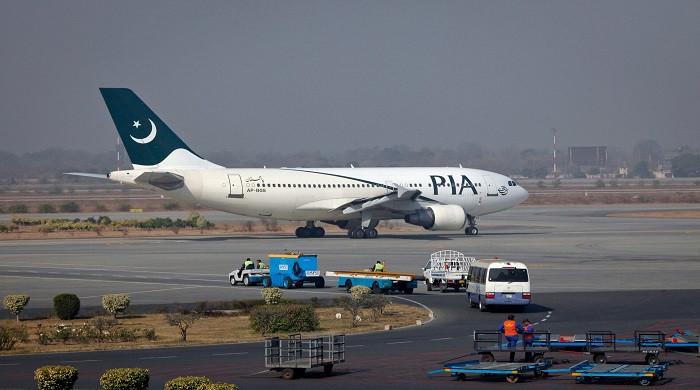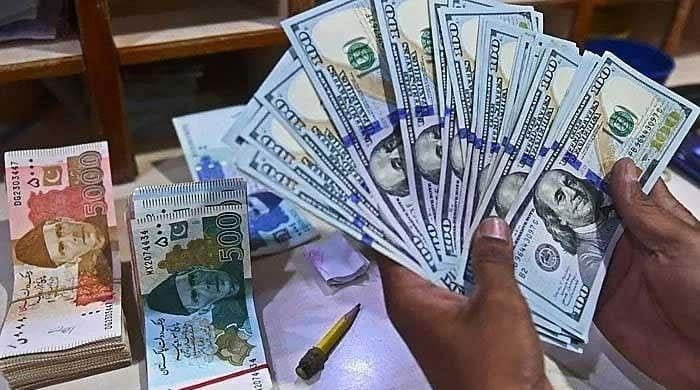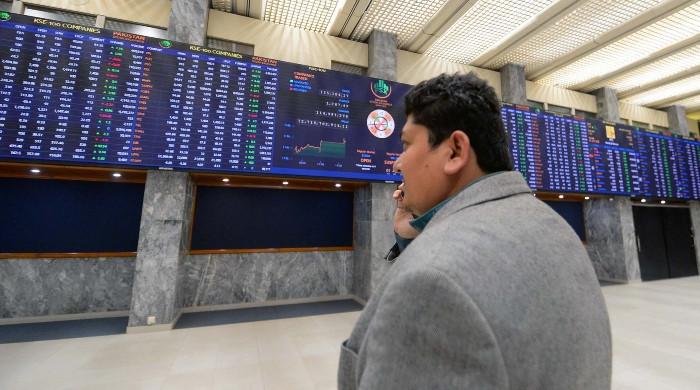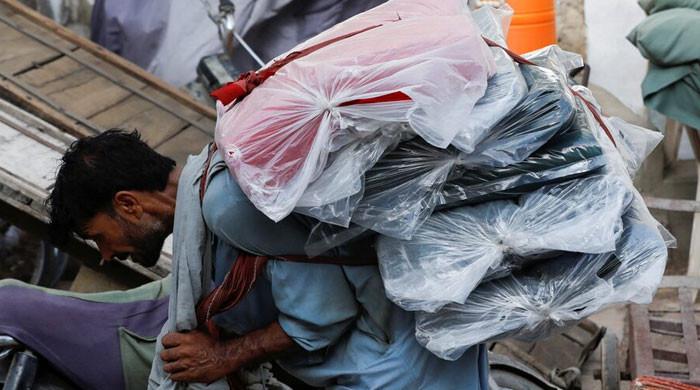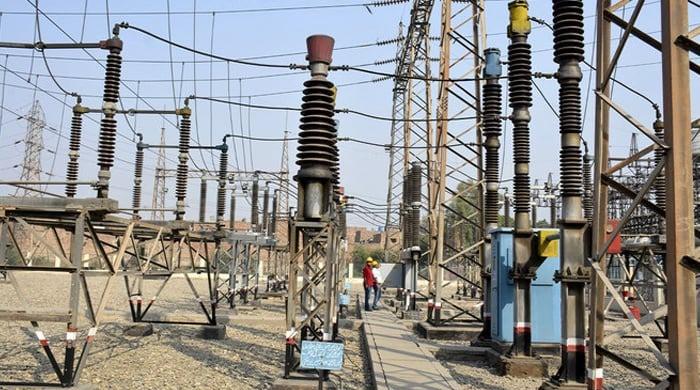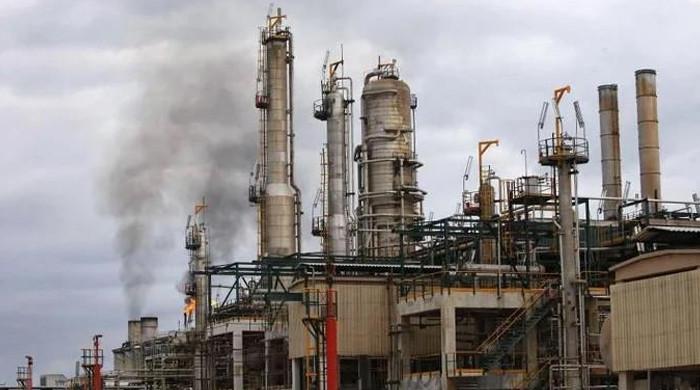IMF asks Pakistan to bring down current account deficit
The IMF staff in technical level talks have assessed that the CAD might go up to 4 percent of GDP, say sources.
October 09, 2021
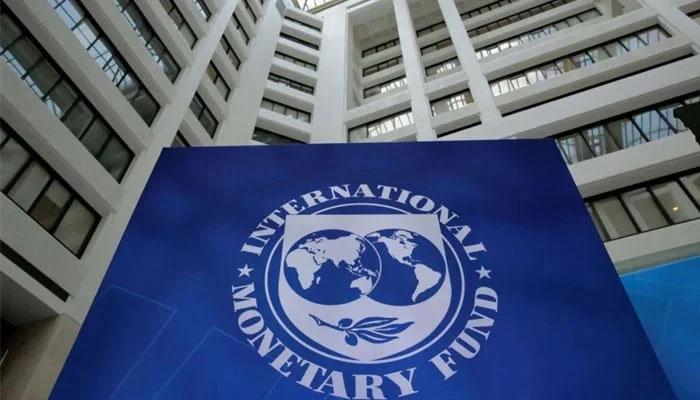
- The International Monetary Fund (IMF) has asked Pakistan to further tighten monetary and fiscal policies, say sources.
- The current account deficit has gone up mainly because of increased prices of POL and commodities in the international market.
- IMF has asked Pakistan to further hike discount rate in order to discourage demands by making imports expensive.
ISLAMABAD: The International Monetary Fund (IMF) has asked Pakistan to further tighten monetary and fiscal policies to bring down the country’s current account deficit, The News reported Friday.
Top official sources told The News, “The IMF staff in technical level talks have assessed that the CAD might go up to 4% of GDP, equivalent to over $12 billion, for the current fiscal year 2021-22,”
The Washington-based lending agency has pitched the country’s current account deficit on the higher side that might climb to over $12 to $13 billion for the current fiscal year against the State Bank of Pakistan’s projection of $6.5 billion to $9 billion.
'Wendy Sherman’s visit importance'
Sources said the recent visit of the US Deputy Secretary of State Wendy Sherman to Islamabad possesses immense importance, having both carrot and stick in her hands, and would play an important role in facilitating both sides to strike a staff-level agreement.
Federal Minister for Finance Shaukat Tarin, Governor SBP Dr Reza Baqir, and secretary finance would conclude the review talks in Washington, DC, from October 13 to 15, 2021 for finalising an agreement on completion of sixth and seventh reviews under the $6 billion Extended Fund Facility (EFF) of the IMF.
Core reason behind widening current account deficit
The current account deficit has gone up mainly because of increased prices of POL and commodities in the international market. The POL price was assessed at about $61 per barrel on the eve of the budget for 2021-22 but on average it crossed $70 per barrel in the first quarter of the current fiscal year.
The IMF has asked Pakistan to manage the financing of the current account deficit through non-debt creating dollar inflows or take corrective measures to allow adjustments in the exchange rate and further hiking of discount rate in order to discourage demands by making imports expensive. “The monetary tightening is on the cards as it may go up from 7.25% to 8%,” said the official.
‘Overheating of the economy’
The IMF, in its prescription about Pakistan’s economic health, clearly suggested that the last budget announced by the PTI government, as well as the Temporary Economic Refinance Facility (TERF) of the State Bank of Pakistan, was meant to stimulate the economy in the aftermath of the emergence of COVID-19 pandemic but it resulted into overheating of the economy whereby cheap available financing/ liquidity was invested into real estate and hiking of imports of luxury items.
Some policy prescriptions such as allowing mobile phones assembly plants resulted into waiving off duty/taxes but the imports of equipment for assembly plants went up manifold.
The SBP imposed a 100% cash margin on 524 items in order to discourage imports but it is assessed that it would have a value of imports close to only $1.2 billion in the last fiscal year. In the Annual Plan for 2021-22 approved by the National Economic Council and the Parliament, the current account deficit was projected at $2.3 billion for the current fiscal year that had already been materialised in the first two months (July and August) of 2021-22.
"The IMF is a multilateral financial institution providing support to member countries having CAD/Balance of Payment (BoP) crisis. They have a manufacturing fault/ policy to see higher CAD. That is why they formulate such assumptions with the rationale of exogenous and endogenous factors,” one top official commented when asked about the higher CAD projection assessed by the IMF’s staff during the technical level talks held virtually during this week.
The talks concluded virtually on Friday as the IMF side shared a table of one to nine comprising macroeconomic projections. The GDP growth was projected close to 5%, so the CAD was bound to go up in the current fiscal year.
The Ministry of Finance high-ups argued that the pressure on importing commodities would start receding as the government has decided that one million tons of wheat planned to be imported through government to government (GtoG) would be abandoned. Fingers are still crossed for the possibility of importing 50,000 tons of sugar as the final decision is yet to be taken by the government.
With regard to the import of two million tons of wheat as strategic reserves, the official said that the strategic reserves are not built up when there are higher prices of any commodity in the world. He was of the view that there were sufficient stocks of wheat available and no one could rule out the possibility of considering allowing the export of wheat in coming March 2022 before harvesting of next wheat crop.





